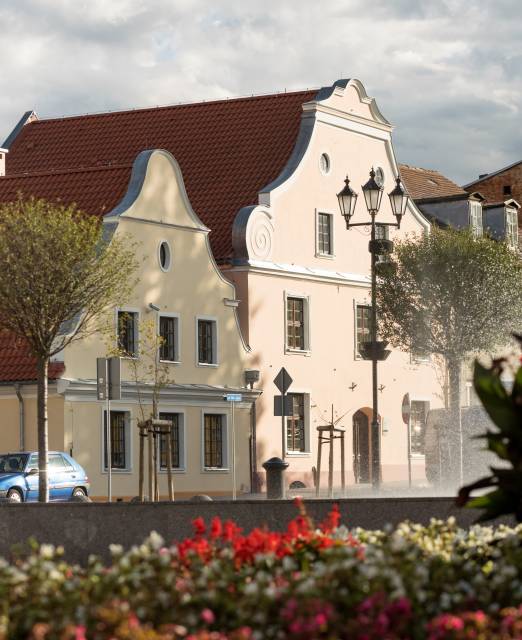The oldest traces of human settlement in Kuyavia Province and the Dobrzyń Land date back to the 12th millennium BC. A small collection of small flint tools, together with the bones of so-called fossil animals come from this period. The Paleolithic was followed by the Mesolithic, which lasted from about 8000 to 5000 BC. The area of present-day Poland was inhabited by settlers who represented the Janisławicka, Komornicka and Chojnicko-pieńkowska cultures, and lived a semi-sedentary hunter-gatherer lifestyle.
The Neolithic period began in Poland around 5500 BC. The first farmers arrived in Kuyavia from the other side of the Carpathian Mountains representing the so-called Linear Pottery, Rod Pottery and Lendzielski cultures. The Neolithic revolution brought new achievements of civilization: fossil farming, animal husbandry, pottery, weaving and more advanced stone working. Farmers lived in houses with long poles and buried their dead according to skeleton rites.
In the Middle Neolithic, from 3800 to 2300 BC, the so-called megalithic cultures - the Funnel-beaker culture and the Globular Amphora culture - appeared in eastern Kuyavia. Their economy was dominated by agriculture, which was partly coupled to farming. They perfected the mining of flint, while their burial rites included both collective and individual skeletal burials, often in monumental tombs built of huge stones - megaliths. In the late Neolithic period, from 2300 to 1800 BC, tribes representing the Laced Ceramic and Bell Beaker cultures arrived in Kuyavia.
In addition to inhumation, they began to practice cremation. The graves contained vessels decorated with cord impressions and bronze objects. They also contained boat-shaped stone battle axes and perfectly shaped triangular and heart-shaped flint arrowheads. The economy was based on nomadic pastoralism. Small, short-lived settlements were established.
During the Bronze Age in Kuyavia and Dobrzyń, between the 17th and 14th centuries BC, the Iwienieńska and Trzciniecka cultures were dominant. Together with the Pre-Lusatian culture, they formed a circle of burial cultures with different burial rites. The economy was dominated by agriculture and permanent settlements were established. From the 13th to the 8th century BC, the Kuyavia and Dobrzyń area was dominated by the Lusatian farming and peasant culture. Their burial rites included individual graves in large, flat cemeteries.
In the early Iron Age, around the middle of the 8th century BC, some skeletal burials of the Lusatian culture appeared in Kuyavia. At the beginning of the 7th century BC, the Pomeranian culture, which survived in Kuyavia until the middle of the 3rd century BC, brought changes in burial rites in the form of flat box cemeteries with various types of graves. A civilizational breakthrough in the Polish lands began with the expansion of the Celts, who led to the spread of iron and introduced a number of new developments, including the potter's wheel and the rotary quern.
At the end of Antiquity, between the 1st and 5th centuries AD, in the so-called period of Roman influence, the Przeworsk and Wielbark cultures dominated in Kuyavia and Dobrzyń Land. The funeral rites of the Przeworsk culture were dominated by the cremation of corpses, usually in pit and ash graves, richly decorated with pottery and iron objects. The Wielbark culture, on the other hand, developed spiritual cemeteries with corpse and skeleton burials. Weapons and tools were replaced by bronze and brass ornaments. Archaeological and natural sources show a continuity of settlement in Kuyavia from the Roman period to the early Middle Ages.



 Places
Places Guides
Guides Map
Map Outdoor games
Outdoor games Trails
Trails Events
Events Mobile app
Mobile app Contact
Contact


